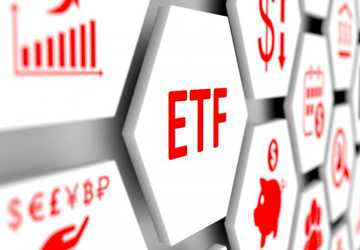In 1993, when State Street Global Advisors' investment management division issued shares of the SPDR 500 trust, an exchange-traded fund called the Standard & Poor's Depository Receipt, or SPDR (SPY), came into being. SPY ETFs, sometimes referred to as "spiders," focus on the S&P 500, and all stocks represent ownership of one of the 500 stocks that make up the S&P 500. Today, investors have access to several additional SPDR funds; some monitor companies based on market value, while others focus on specific market sectors.
Mutual Funds and Spies
Unlike mutual funds, SPDR funds do not issue stock to investors when investing. Instead, SPDRs are traded on exchanges like stocks because they have a certain number of shares that can be bought and sold publicly. On the other hand, mutual fund companies issue and redeem mutual fund shares.
Fluctuations in the underlying index are always reflected in the value of each unit of each SPDR ETF. For example, the SPDR 500 trust, which trades under the symbol SPY, is said to be trading at about one-tenth the price of the S&P 500. Although there is no exact correlation, ETF shares are trading around $200 when the S&P 500 is at 2,000.

S&P's Sectors and Capitalization
The market capitalization and sectors of the S&P 500 are the focus of the specially developed SPDR ETF. Examples of market value-based exchange-traded funds (ETFs) are the SPDR Portfolio S&P 600 Small-Cap ETF and the SPDR Portfolio S&P 400 Mid-Cap ETF. State Street Global Advisors announced index and name changes for some of these ETFs on January 24, 2020:
In addition, State Street has developed SPDRs based on multiple sectors of the S&P 500, including SPDR Financials (XLF), SPDR Basic Materials (XLB) and SPDR Energy (XLE). The industry fund holds 500 stocks in the S&P 500.
SPDR Hedges, Futures and Options
Stocks in SPDR ETFs can be shorted because they trade in a similar way to stocks. Options linked to the individual performance of many ETFs are also available and can be used as a hedge. For example, if the S&P 500 rises, investors will benefit if they hold more of the S&P 500 SPDR ETF or the stock market. Conversely, if the index falls, investors suffer investment losses. However, if that investor hedges the position by shorting the SPDR or buying a put option (a strategy known as a market hedging strategy), some risk can be reduced.

Final judgment
Retail investors have access to SPDR ETFs. Shares can be purchased based on the performance of the market or index. Additionally, SPDR is able to provide deeper market coverage through ETFs that track a broader index. Alternatively, investors can make targeted bets by buying SPDRs that focus on a specific industry or market capitalization. In addition, the customizable SPDR can be used as a hedging tool.




